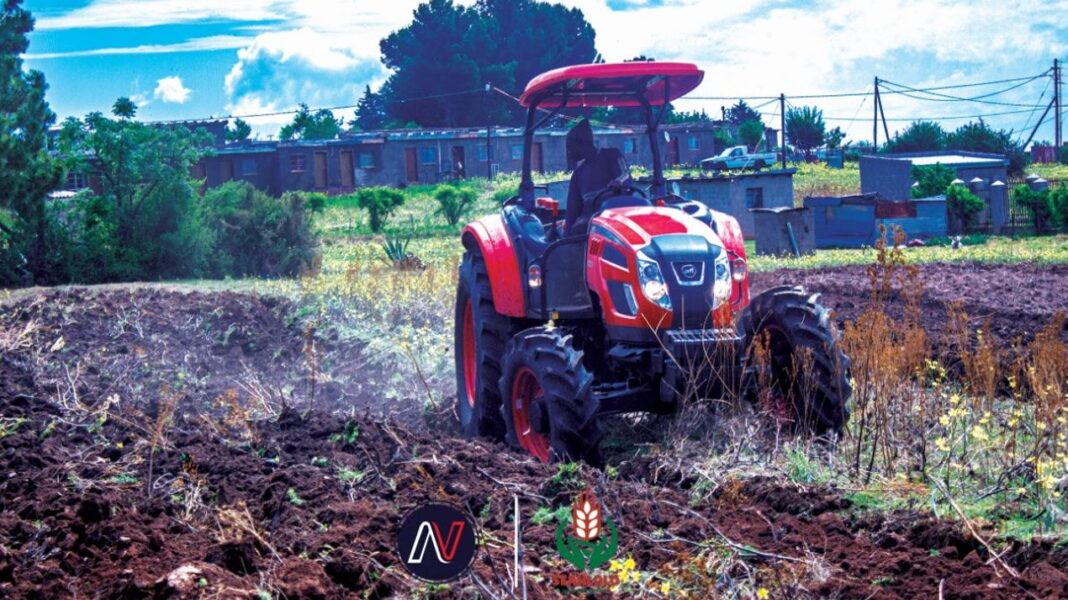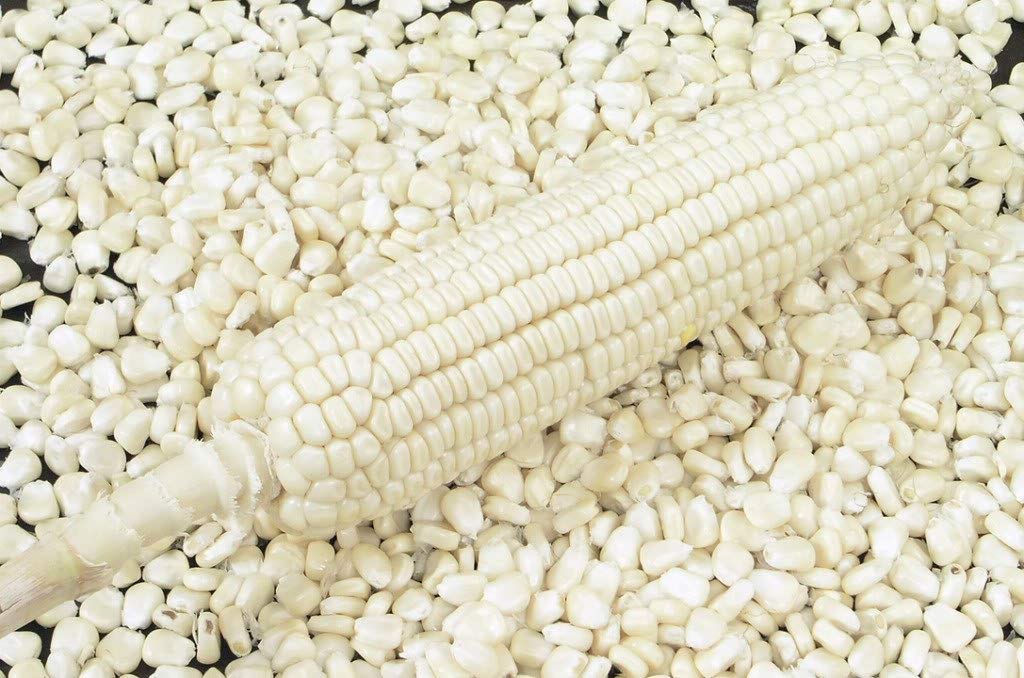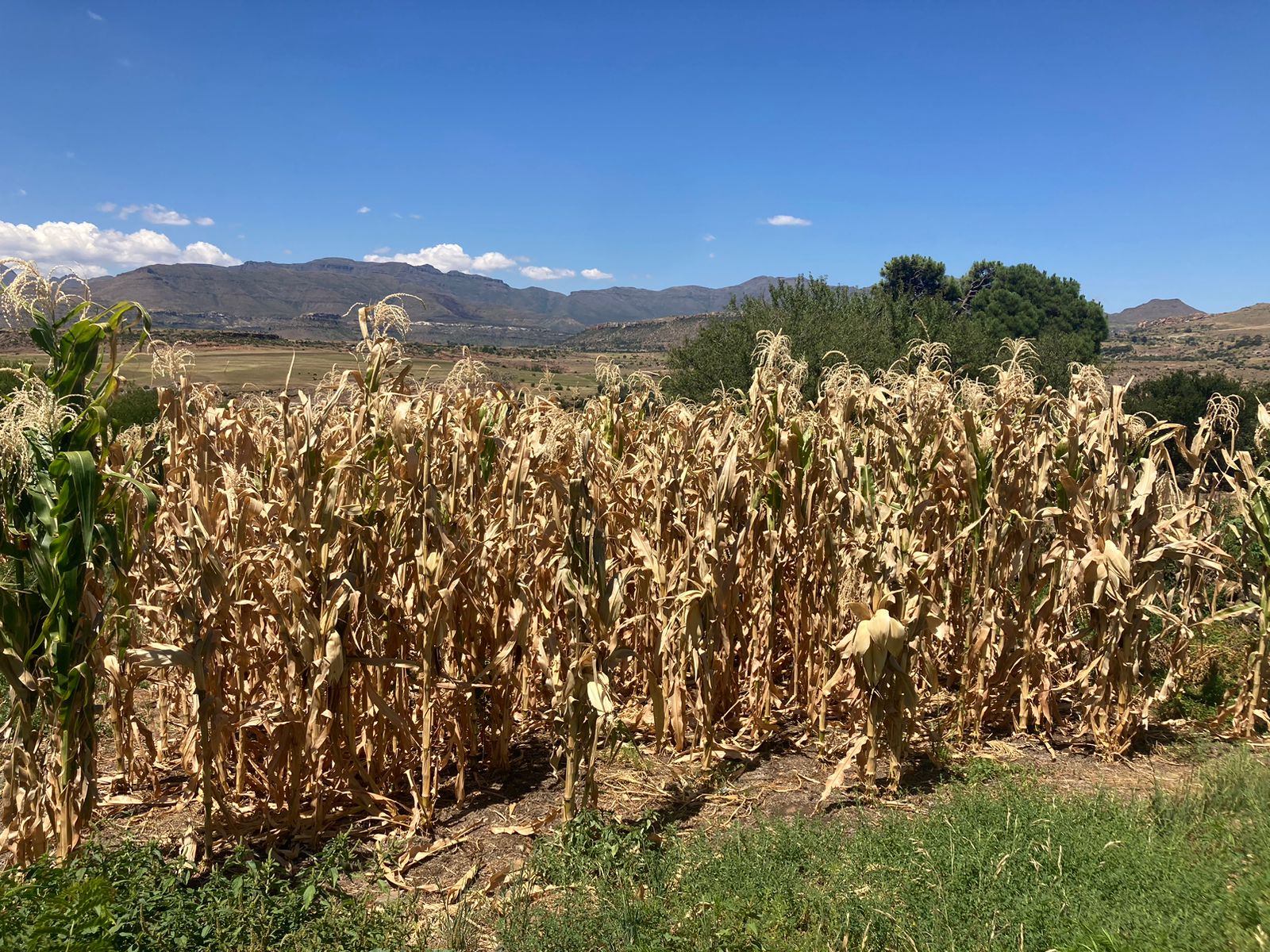- Maize production, Lesotho’s main staple, falls by 19 percent
- Sorghum production plunges by 43 percent
- Lesotho looks to South Africa for food imports
Lesotho is facing another difficult year as the cost of living rises sharply while crop production continues to decline, worsening the struggle for thousands of households already pushed to the brink by economic hardship and erratic weather.
According to the 2025 Annual Vulnerability Assessment Report, a combination of socio-economic shocks, including job losses, reduced casual labour opportunities, and persistent price hikes, has severely weakened household purchasing power across the country.
“Loss of formal employment, reduced on-farm income, and higher prices have significantly reduced total household incomes, further weakening already fragile livelihoods,” the report states.
National crop production estimates reveal a grim picture. While more land was planted for maize, sorghum, and wheat during the 2024/25 agricultural season, yields per hectare declined across all major cereals.
Maize production, Lesotho’s main staple, fell by 19 percent, dropping from 56,472 metric tonnes in 2024 to 45,780 metric tonnes in 2025. Sorghum production plunged by 43 percent, from 6,300 metric tonnes to just 3,616 metric tonnes.
Only wheat showed improvement, with a 17 percent increase, rising to 4,874 metric tonnes.
The report noted that the country will continue to rely heavily on cereal imports from South Africa, which recorded a good harvest, to ensure stable food supplies and open market access.
However, this dependence exposes Lesotho to regional market fluctuations and currency vulnerabilities.
“It should be noted that the country would still meet its annual cereal requirements through imports from RSA, which recorded improved maize production estimates,” the report read.
“Supply chain for basic food and non-food items is still stable, an indication that food availability is adequate with no restrictions at the main borders with RSA and markets are projected to be fully functional throughout the consumption year,” it added.
The Survival Minimum Expenditure Basket, the amount needed for a household of four to meet basic needs, has climbed from M1,220 to M1,320 per month.
“The persistently high food prices compared to the previous year have significantly undermined the purchasing power of households, making it increasingly difficult for them to afford essential food and nonfood items,” the report read.
“Most households which were interviewed indicated that one of the shocks that impacted negatively on their purchasing power was loss of employment. This was as a result of the US administration which led to closure of factories and projects,” it added.
Food quality is also deteriorating. The Food Consumption Score, a measure of dietary diversity and frequency, shows that 25 percent of households now have poor food consumption compared to 19 percent in 2024.
The Integrated Food Security Phase Classification (IPC) analysis, according to the report, projects that 258,300 rural residents will face crisis or worse (IPC Phase 3 and above) food insecurity between May and September 2025.
The situation is expected to worsen from October 2025 to March 2026, when 334,100 people could fall into acute food insecurity.
Urban areas are also struggling. The Economic Capacity of Households to Meet Essential Needs (ECMEN) assessment estimates that 190,850 people in towns and cities will be food insecure during the 2025/26 consumption year.
Altogether, 524,950 Basotho, roughly one in four people, are projected to be food insecure in the current consumption year, even though this figure represents a 25 percent decline from 2024/25.
The report urged immediate humanitarian assistance for all food-insecure populations in both rural and urban areas, while also calling on the government to strengthen long-term measures that can boost self-reliance.
It emphasised that supporting market opportunities for local farmers with surplus produce would not only improve household incomes but also enhance national food security.
It further called on all key stakeholders, including government institutions, NGOs, United Nations (UN) agencies, and the private sector, to work together in designing and implementing programmes that can improve food production, nutrition, and resilience.
Among the urgent priorities is the intensification of Integrated Catchment Management to restore degraded rangelands and protect water sources, alongside comprehensive livestock vaccination campaigns to curb seasonal disease outbreaks.
The report also recommended that the government scale up anticipatory actions, strengthen people-centred early warning systems, and invest in impact-based forecasting and risk financing to ensure timely responses to climate- and disaster-related shocks.
Finally, it stressed the need to fully operationalise the National Strategic Resilience Framework, which aims to diversify livelihoods and build long-term resilience to future crises.
Effective collaboration and partnerships, it concluded, remain central to improving preparedness, ensuring coordinated response, and reducing vulnerability across Lesotho.
The Lesotho Vulnerability Assessment Committee (LVAC) was established in 2002 as a government-led, multi-disciplinary body operating under the Office of the Prime Minister through the Disaster Management Authority (DMA).
Its membership brings together representatives from government ministries and departments, United Nations agencies, non-governmental organisations, and the private sector.
The Committee’s main responsibility is to assess livelihood vulnerabilities across the country and provide timely information for both emergency interventions and long-term planning.
While the process of vulnerability assessment has traditionally been centralised, efforts to decentralise it have made significant progress. District teams now collect data in their respective areas, and some district representatives also take part in data analysis and report preparation.
Since its inception, LVAC has conducted annual vulnerability assessments without interruption. The 2025 exercise, carried out in June, continues this important work of monitoring and analysing the factors that affect food and nutrition security in the country.
The overall aim of the 2025 assessment was to analyse the state of food and nutrition security and to determine the extent and nature of vulnerability among the population for the 2025/2026 consumption year.
The assessment sought to provide policymakers, government institutions, and development partners with up-to-date and reliable information to support effective decision-making and programme design.
Specifically, the assessment set out to estimate the number of vulnerable people, their geographic distribution, and the level of severity of their situation during the 2025/2026 consumption year, identify both the underlying and immediate causes of food and nutrition insecurity, and provide clear and actionable recommendations for targeted interventions and assistance.
The 2025 Vulnerability Assessment combined both quantitative and qualitative methods to ensure a comprehensive understanding of the situation.
Data were collected through household surveys in rural and urban settlements, while the Household Economy Approach (HEA) was applied in rural areas to gain deeper insight into household livelihoods and coping capacities.
A semi-structured questionnaire was used to gather information at the household level on agricultural performance, water availability, food security, income and expenditure patterns, protection concerns, as well as health and nutrition. The assessment also took into account cross-cutting issues such as HIV/AIDS, gender, migration, and protection dynamics.
Among all households interviewed, at least 35 percent reported having one or more members living with HIV. These cases were found to be common across both urban and rural areas, with a notable concentration among female-headed households.
District-level analysis showed that Mohale’s Hoek recorded the highest proportion of affected households at 42 percent, followed by Maseru and Thaba-Tseka at 38 percent each, and Leribe at 37 percent.
The majority of households hosting a member living with HIV were headed by adults aged between 35 and 64 years (41 percent), while 31 percent were led by elderly persons aged 65 years and above. Only two percent of respondents said they did not know the HIV status of their household members.
Encouragingly, 99 percent of individuals living with HIV were reported to be on Antiretroviral Therapy (ART). However, adherence challenges remain, with nine percent of those on treatment admitting to having missed between one and five doses in the 30 days prior to the survey.
The most commonly cited reason for missing doses was lack of money for transport to health facilities, while a smaller proportion (five percent) reported non-adherence due to lack of interest or motivation.
Summary
- The report noted that the country will continue to rely heavily on cereal imports from South Africa, which recorded a good harvest, to ensure stable food supplies and open market access.
- “Supply chain for basic food and non-food items is still stable, an indication that food availability is adequate with no restrictions at the main borders with RSA and markets are projected to be fully functional throughout the consumption year,” it added.
- The Food Consumption Score, a measure of dietary diversity and frequency, shows that 25 percent of households now have poor food consumption compared to 19 percent in 2024.

Ntsoaki Motaung is an award-winning health journalist from Lesotho, specializing in community health stories with a focus on sexual and reproductive health and rights, as well as HIV. She has contributed to platforms like “Be in the KNOW,” highlighting issues such as the exclusion of people with disabilities from HIV prevention efforts in Lesotho.
In addition to her journalism, Ntsoaki serves as the Country Coordinator for the Regional Media Action Plan Support Network (REMAPSEN). She is also a 2023 CPHIA Journalism Fellow.









